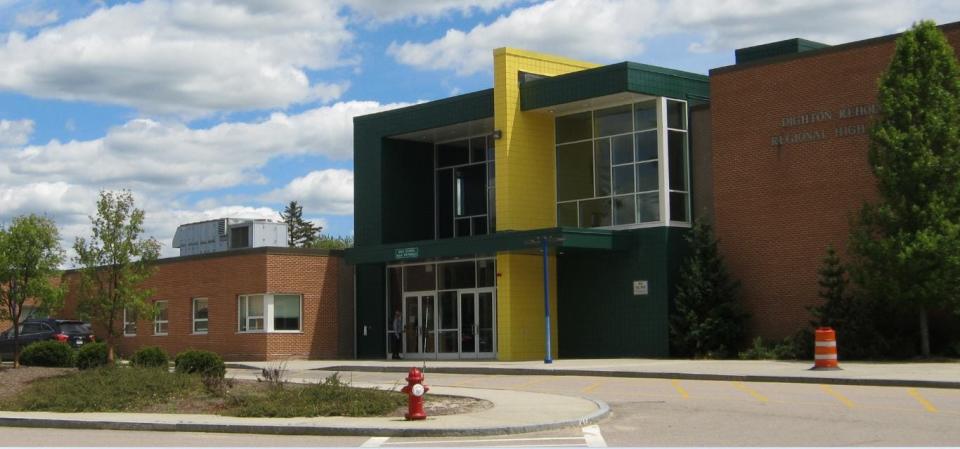Rehoboth balks at paying more per student than Dighton — Will it withdraw from D-R?
DIGHTON — Rehoboth residents will soon decide whether their town should withdraw its kindergarten through eighth grade students from the Dighton-Rehoboth Regional School District.
The vote will take place at a special Town Meeting on Saturday, Aug. 6.
The effect of the move would be either a financial benefit to the town of Rehoboth or lower quality education for Rehoboth students, depending on which side of the issue is speaking.
The chair of Rehoboth's K-8 Withdrawal Study Committee, Michael McBride, said the idea of withdrawing started because of the town's disagreement with its yearly assessment and what he called state interference.
In 2019, Rehoboth voted three times to reject the regional school committee's budget, but these votes were dismissed by the Department of Elementary and Secondary Education, he said.
DESE assumed financial control of the district after Rehoboth rejected the district's assessment at three separate town meetings then forced the town to pay a higher assessment than the one residents approved.
"If our K-8 was independent, there could have been a decision on Town Meeting floor with no state interference," he said.

In 1987, Dighton and Rehoboth regionalized their K-8 mainly to take advantage of the state funding on transportation, the committee pointed out in its recent slide show presentation on the issue.
In 2014, a new state statutory method for calculating the assessment of each member in a school region was first implemented by the Dighton-Rehoboth Regional District.
Yacht not included: Berkley riverfront home sells for $1.5 million
That new calculation substituted the "cost per student" method, which Rehoboth had originally agreed upon with Dighton, with an assessment that factors in the wealth of a community.
According to the U.S. Census Bureau, Rehoboth's median household income as of 2020 was $118,470 and Dighton's was $96,627.
"This increased Rehoboth's share of the 'operating budget' to 65% and Dighton's share to 35% which no longer reflected actual enrollment," the committee asserts.
The committee projects a surplus of $3.4 million if Rehoboth were to withdraw its K-8 from the district. It calculates that Rehoboth's FY2023 (District) Assessment will be $12,131,990 but the K-8 actual budget after aid will be $8,693,838.
State's high court rules against Taunton: Taunton loses battle to deny Bask a pot shop permit — but it's not over. Here's why.
The committee has said in its literature that a newly created Rehoboth School Committee would be able to solely focus on Rehoboth's K-8.
"No longer will we have to provide the same improvements to Dighton," its literature states.
And this new school committee would provide "greater accountability to Rehoboth voters," it adds.
"Rehoboth's K-8 would receive 100% of Rehoboth's funding, as it would no longer be part of the district's 'operating budget' and not be subject to the 'wealth factor' where we pay 65% of all expenses, including schools in Dighton."
Whose numbers are right?
D-R Superintendent of Schools Bill Runey disagrees with these calculations.
He said while Rehoboth withdrawal advocates say the town will benefit by $3.4 million, the district estimates the town will lose $2.4 million.
The town of Rehoboth, he explained, is projected to have 1,440 students or 57% of the D-R district's student population in FY23. The town of Dighton is projected to have 1,106 students or 43% of the student population.

As a result, Rehoboth's portion of the fiscal 2023 $48.1 million operating budget is $27.2 million or 57%, matching their student allotment. Dighton's portion is $20.9 million or 43%.
Where the difference comes in is state aid.
Rehoboth pays $20.4 million of its $27.2 million share of the regional school budget or 74%, with the remainder being made up of state aid and other revenues.
Meanwhile, Dighton pays only $11.4 million of its $20.9 million share of the regional school budget or 55%, with the remainder being made up of state aid and other revenues.
"The percentages match the responsibility based on the number of students," Runey said.
"This proves that zero dollars from the town of Rehoboth are going to the education of the students who live in Dighton. The percentages of the operating budget that each town is responsible for are based on their enrollment and the wealth factor."
"Their argument should be with the legislators who determine the formulas for state aid."
In a recent D-R School Committee presentation on the issue, Runey was even more blunt. While he applauded "civic activism," he said he sees vast differences between the school district's and the withdrawal committee's perspectives and financial calculations.
"Our (D-R's) focus is on the outcomes for kids," he said. "It seems the focus of Rehoboth's K-8 Withdrawal Study Committee is only rooted in finances. We may have a wish list of goals in mind for our schools. The amount of money we have might force you to revisit your wish list."
Runey noted the transition from eighth to ninth grade is difficult enough. After the interruption of in-class learning because of the COVID pandemic that transition has been even harder.
If, after the Rehoboth K-8 withdrawal, incoming freshmen from Rehoboth have been exposed to a different curricular approach in the lower grades, their transition to a high school level education will be even harder. Economically disadvantaged and special needs students will lose out as a result of this withdrawal and split system.
Plus, his department asserts, under a withdrawal scenario Rehoboth would lose its regional transportation expense credit and have to assume OPEB costs.
At that presentation, Runey proposed that an independent feasibility study by an educational consultant could determine the correct financial impact of the K-8 withdrawal. He said the Aug. 6 Town Meeting should table a vote until that process could happen. It is a proposal that Rehoboth withdrawal advocates have yet to answer directly.
Runey also noted he has only been the school region's superintendent since July 1. "DRRSD has an almost entirely new district leadership team," he said.
"Giving us and our school committee a chance to collaborate with each town's leadership will create a higher level of trust and a clearer, tiered budget approach as we seek to demonstrate that 'We are D-R' to best serve our students and staff," he said.
This article originally appeared on The Taunton Daily Gazette: Rehoboth to vote on withdrawing K-8 from the Dighton-Rehoboth district

